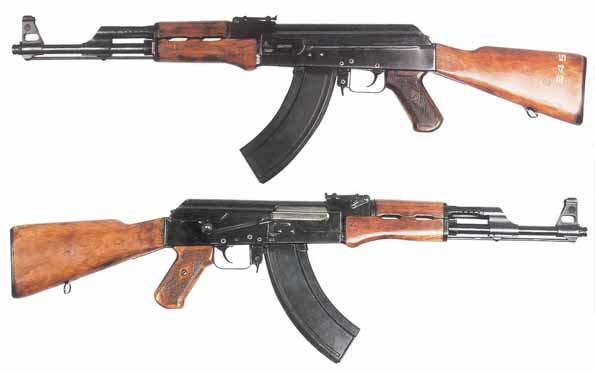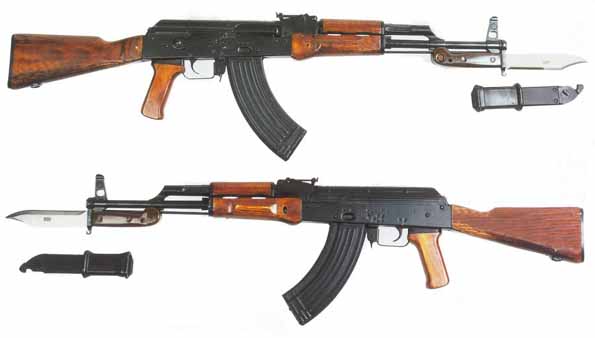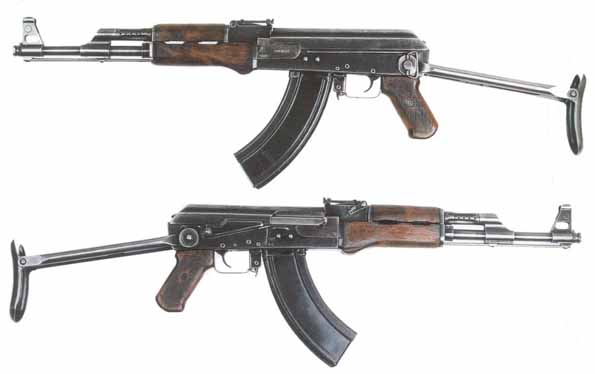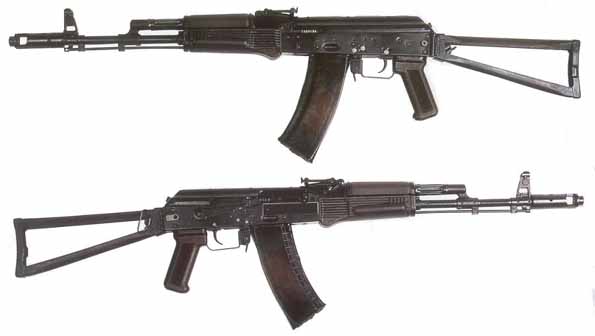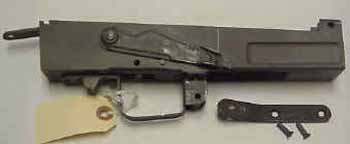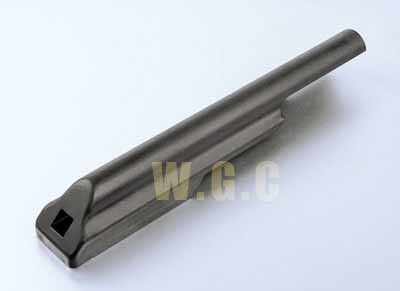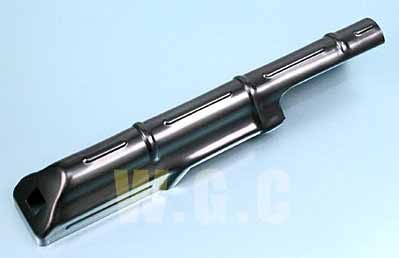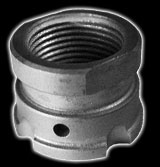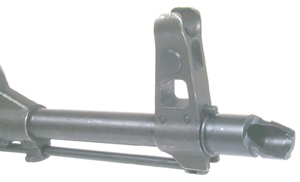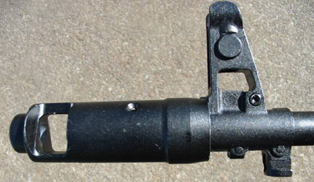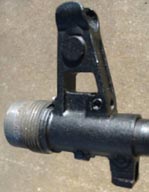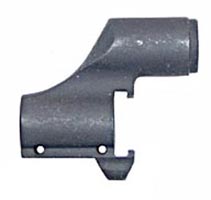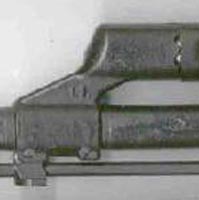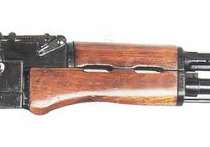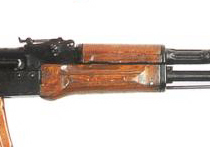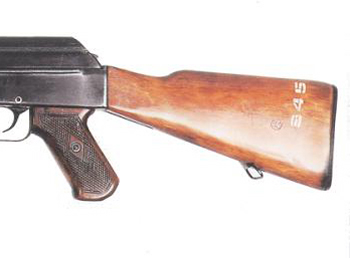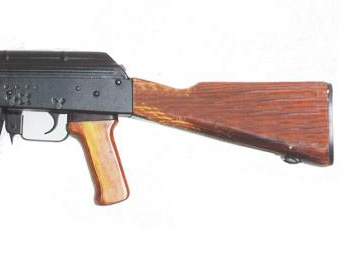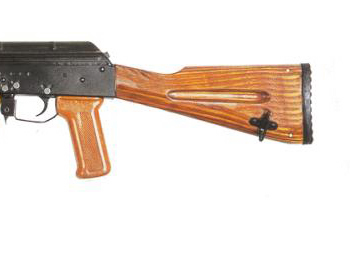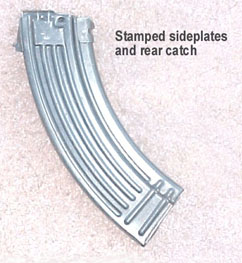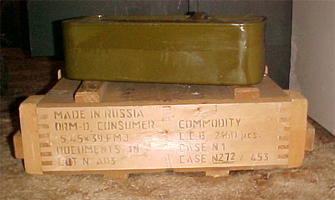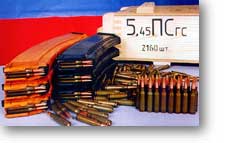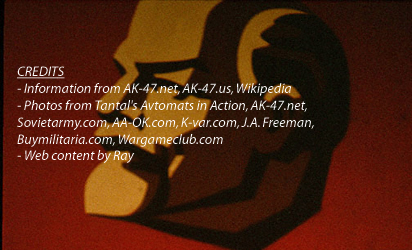|
||||||||||||||||||||||||||||||||||||||||||||||||||||||||||||||||||||||||||||||||||||||||||||||||||||||||||||||||||||||||||||||||||||||||
|
||||||||||||||||||||||||||||||||||||||||||||||||||||||||||||||||||||||||||||||||||||||||||||||||||||||||||||||||||||||||||||||||||||||||
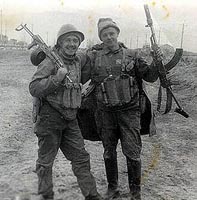 |
||||||||||||||||||||||||||||||||||||||||||||||||||||||||||||||||||||||||||||||||||||||||||||||||||||||||||||||||||||||||||||||||||||||||
| One of the most asked question that I hear is what is the difference between one model AK versus another model AK. I have put this page together to help answer this question. Only the major differences between the models that are blatantly noticeable will be featured on this page. I am aware that smaller details exists like change in rivet patterns and magazine release levers, the non-noticeable details, but the small details will not be covered here. Tantal's "Avtomats in Action" web site has a section devoted to these smaller details. This just a "quick and dirty" on rifle recognition. This page will deal with Soviet-era (1947 - 1991) models ONLY and will not explain about any other variants by other countries nor the post-1991, Russian-era Kalashnikovs. Also, this page will deal with only the standard issue, infantry rifle. The RPK and AKS-74U will not be covered here. I might add them later. | ||||||||||||||||||||||||||||||||||||||||||||||||||||||||||||||||||||||||||||||||||||||||||||||||||||||||||||||||||||||||||||||||||||||||
| To lear more about the evolution of the AK-74 rifle, please visit: "Russian AK-74 Production Modifications" on Tantal's Avtomats In Action Website | ||||||||||||||||||||||||||||||||||||||||||||||||||||||||||||||||||||||||||||||||||||||||||||||||||||||||||||||||||||||||||||||||||||||||
|
||||||||||||||||||||||||||||||||||||||||||||||||||||||||||||||||||||||||||||||||||||||||||||||||||||||||||||||||||||||||||||||||||||||||
| Pretty much, there are three major variations or "Eras" (as I like to call it) of Automatic Kalashnikovs that entered into Soviet service from 1947 to 1991. They are (in order of oldest to newest); the AK-47, the AKM and the AK-74. Each variant makes major improvements on the previous variant. Threre exists numerous improvements and modifications within each variant. These minute differences will not be covered here. Each variation of AK has a solid stock and a foldable butt-stock version. The foldable butt-stock was designed for use with the paratroopers, special forces and vehicle crews. |
What does AK - 47, AKM or AKS - 74 mean? Here is a list of what these letters mean: AK = (A)utomatic (K)alashnikov or (A)vtomat (K)alashnikova Example: AKMS = (A)utomatic (K)alashnikov, (M)odified with a (S)Folding Butt |
|||||||||||||||||||||||||||||||||||||||||||||||||||||||||||||||||||||||||||||||||||||||||||||||||||||||||||||||||||||||||||||||||||||||
 |
||||||||||||||||||||||||||||||||||||||||||||||||||||||||||||||||||||||||||||||||||||||||||||||||||||||||||||||||||||||||||||||||||||||||
| The primary manufacterer of the Kalashnikov rifle was and still is Izhmash and is identified with this proof mark. | ||||||||||||||||||||||||||||||||||||||||||||||||||||||||||||||||||||||||||||||||||||||||||||||||||||||||||||||||||||||||||||||||||||||||
|
||||||||||||||||||||||||||||||||||||||||||||||||||||||||||||||||||||||||||||||||||||||||||||||||||||||||||||||||||||||||||||||||||||||||
|
Soviet AKs during the Cold War were identified with a series of markings on the left side of the front trunion. The markings include (in this order): the proof mark, the year of manufacture, and the serial number. More examples are seen below. (All photographs in this section are from Stottman. He has an awesome collection of AK photos HERE.) 1) Proof Mark (Izhmash) 2) Date of manufacture [either four or two digit year] (1970) 3) Serial number [either all numbers or first two digits are letters and remaining are numbers] (Tn4950) |
|||||||||||||||||||||||||||||||||||||||||||||||||||||||||||||||||||||||||||||||||||||||||||||||||||||||||||||||||||||||||||||||||||||||
 |
Izhmash Manufacturer of the AK(S)-47, AKM(S), and AK(S)-74. |
 |
Polyany (MOLOT) Manufacturer of the RPK and RPK-74. |
 |
 |
Tula Manufacturer of the AKS-74U. |
||||||||||||||||||||||||||||||||||||||||||||||||||||||||||||||||||||||||||||||||||||||||||||||||||||||||||||||||||||||||||||||||||
 |
 |
 |
||||||||||||||||||||||||||||||||||||||||||||||||||||||||||||||||||||||||||||||||||||||||||||||||||||||||||||||||||||||||||||||||||||||
 |
 |
 |
||||||||||||||||||||||||||||||||||||||||||||||||||||||||||||||||||||||||||||||||||||||||||||||||||||||||||||||||||||||||||||||||||||||
|
||||||||||||||||||||||||||||||||||||||||||||||||||||||||||||||||||||||||||||||||||||||||||||||||||||||||||||||||||||||||||||||||||||||||
| SOLID STOCK VARIANTS: |
|
|||||||||||||||||||||||||||||||||||||||||||||||||||||||||||||||||||||||||||||||||||||||||||||||||||||||||||||||||||||||||||||||||||||||
|
AK - 47
Designed in 1947, adopted in 1949 and entered service with the Soviet Armed Forces in 1951. The caliber is 7,62 x 39 mm. |
||||||||||||||||||||||||||||||||||||||||||||||||||||||||||||||||||||||||||||||||||||||||||||||||||||||||||||||||||||||||||||||||||||||||
|
||||||||||||||||||||||||||||||||||||||||||||||||||||||||||||||||||||||||||||||||||||||||||||||||||||||||||||||||||||||||||||||||||||||||
|
AKM
Developed in 1959 and entered service with the Soviet Armed Forces in 1961. The caliber is 7,62 x 39 mm. |
||||||||||||||||||||||||||||||||||||||||||||||||||||||||||||||||||||||||||||||||||||||||||||||||||||||||||||||||||||||||||||||||||||||||
|
||||||||||||||||||||||||||||||||||||||||||||||||||||||||||||||||||||||||||||||||||||||||||||||||||||||||||||||||||||||||||||||||||||||||
|
AK - 74
Entered service with the Soviet Armed Forces in 1974. The caliber is 5,45 x 39 mm. |
||||||||||||||||||||||||||||||||||||||||||||||||||||||||||||||||||||||||||||||||||||||||||||||||||||||||||||||||||||||||||||||||||||||||
|
FOLDABLE BUTT-STOCK VARIANTS: | |||||||||||||||||||||||||||||||||||||||||||||||||||||||||||||||||||||||||||||||||||||||||||||||||||||||||||||||||||||||||||||||||||||||
|
AKS - 47
Designed in 1947, adopted in 1949 and entered service with the Soviet Armed Forces in 1951. The caliber is 7,62 x 39 mm. |
||||||||||||||||||||||||||||||||||||||||||||||||||||||||||||||||||||||||||||||||||||||||||||||||||||||||||||||||||||||||||||||||||||||||
|
||||||||||||||||||||||||||||||||||||||||||||||||||||||||||||||||||||||||||||||||||||||||||||||||||||||||||||||||||||||||||||||||||||||||
|
AKMS
Developed in 1959 and entered service with the Soviet Armed Forces in 1961. The caliber is 7,62 x 39 mm. |
||||||||||||||||||||||||||||||||||||||||||||||||||||||||||||||||||||||||||||||||||||||||||||||||||||||||||||||||||||||||||||||||||||||||
|
||||||||||||||||||||||||||||||||||||||||||||||||||||||||||||||||||||||||||||||||||||||||||||||||||||||||||||||||||||||||||||||||||||||||
|
AKS - 74
Entered service with the Soviet Armed Forces in 1974 first seen by the West in 1977. The caliber is 5,45 x 39 mm. |
||||||||||||||||||||||||||||||||||||||||||||||||||||||||||||||||||||||||||||||||||||||||||||||||||||||||||||||||||||||||||||||||||||||||
|
||||||||||||||||||||||||||||||||||||||||||||||||||||||||||||||||||||||||||||||||||||||||||||||||||||||||||||||||||||||||||||||||||||||||
|
The Gas Operated Action of the AK
The AK series of weapons utilizes a piston operated action. This animation shows the gas operated action that is found on all AK series weapons. If anyone knows the artist of this animation, please email me so I can properly credit the individual for their work. Click here to watch a slow-motion video of the AK action. (courtesy of kurzzeit.com) |
|
|||||||||||||||||||||||||||||||||||||||||||||||||||||||||||||||||||||||||||||||||||||||||||||||||||||||||||||||||||||||||||||||||||||||
|
||||||||||||||||||||||||||||||||||||||||||||||||||||||||||||||||||||||||||||||||||||||||||||||||||||||||||||||||||||||||||||||||||||||||
| Receiver: The first AK-47s were stamped receivers. They were strong and easy to build. But in an attempt to improve their strength the Russians turned to a milled receiver for many years. The labor and material required to make a milled receiver were too much and the stamped receiver was again adopted. There is some debate over which is stronger or better, and both have advantages and weaknesses. (Text from AK-47.us) |
||||||||||||||||||||||||||||||||||||||||||||||||||||||||||||||||||||||||||||||||||||||||||||||||||||||||||||||||||||||||||||||||||||||||
|
Milled Receiver (pictured on right)
The milled receiver is produced from a 4 lb block of steel, which is machined to create a one piece receiver. The milled receiver contains no rivets and is generally much heavier than the stamped version. Milled receivers have also been known to shoot more accurately, due to the increased weight and one piece design. The milled receiver does not incorporate the use of a separate trunnion. Instead the trunnion is machined into the receiver and the barrel is threaded into the trunnion. A milled receiver can be identified by the lack of rivets and the two rectangle like indentations on each side of the receiver, usually two inches long. This receiver is found the AK-47 and the AKS-47. As a side note: It is important to mention that the first model AK-47's used a stamped receiver, but this method was dropped. Look at the photos of the AK-47 above to see this stamped receiver. (Text from AK-47.net, Photo from Buymilitaria.com) |
||||||||||||||||||||||||||||||||||||||||||||||||||||||||||||||||||||||||||||||||||||||||||||||||||||||||||||||||||||||||||||||||||||||||
|
||||||||||||||||||||||||||||||||||||||||||||||||||||||||||||||||||||||||||||||||||||||||||||||||||||||||||||||||||||||||||||||||||||||||
|
Stamped Receiver (pictured on left)
The stamped receiver is produced by the use of stamped sheet metal which is bent into a "U" shape. Then a front & rear trunnion are riveted in place to hold the stock and the barrel assembly. Stamped receivers are easily distinguishable due to the bump like rivets that hold them together, and their light weight. Stamped receivers also feature a indentation on each side of the receiver (near the magazine well) which measures almost an inch long. This receiver is found on remaining models of AKs; AKM, AKMS, AK-74 and the AKS-74. (Text from AK-47.net, Photo from Buymilitaria.com) |
||||||||||||||||||||||||||||||||||||||||||||||||||||||||||||||||||||||||||||||||||||||||||||||||||||||||||||||||||||||||||||||||||||||||
|
||||||||||||||||||||||||||||||||||||||||||||||||||||||||||||||||||||||||||||||||||||||||||||||||||||||||||||||||||||||||||||||||||||||||
| Receiver Cover: | ||||||||||||||||||||||||||||||||||||||||||||||||||||||||||||||||||||||||||||||||||||||||||||||||||||||||||||||||||||||||||||||||||||||||
|
|
|||||||||||||||||||||||||||||||||||||||||||||||||||||||||||||||||||||||||||||||||||||||||||||||||||||||||||||||||||||||||||||||||||||||
|
There are two basic types of AK receiver covers. One being the "Ribbed" cover and the other being the "Non-Ribbed". The ribbed receiver cover is painted black with raised bumps in the metal to increase strength & durability. The ribbed versions are commonly seen on modern Eastern Bloc AKs. The non-ribbed version are relatively similar in design, instead they are a blued shiny metal and lack the raised bumps of the ribbed version. The non-ribbed versions are commonly seen on Chinese AKs. The non-ribbed version has has numerous design flaws, illustrating why it was replaced. While the non-ribbed cover is acceptable in design it is easily dented and or rusts in humid climates. (Text from AK-47.net)
Non-ribbed receiver covers are seen on AK-47 and AKS-47. Ribbed receiver covers made their appearance first on the AKM in 1959 and continued to be used on the AK-74 series of rifles. Photos from Wargameclub.com |
||||||||||||||||||||||||||||||||||||||||||||||||||||||||||||||||||||||||||||||||||||||||||||||||||||||||||||||||||||||||||||||||||||||||
|
||||||||||||||||||||||||||||||||||||||||||||||||||||||||||||||||||||||||||||||||||||||||||||||||||||||||||||||||||||||||||||||||||||||||
| Muzzle Nut / Break: | ||||||||||||||||||||||||||||||||||||||||||||||||||||||||||||||||||||||||||||||||||||||||||||||||||||||||||||||||||||||||||||||||||||||||
|
|
|
||||||||||||||||||||||||||||||||||||||||||||||||||||||||||||||||||||||||||||||||||||||||||||||||||||||||||||||||||||||||||||||||||||||
|
AK-47 Muzzle Nut
The AK-47's first muzzle break was in the form of this nut. This is also seen on some AKMs. This is threaded and is able to be removed. (Photo from K-var.com) |
AKM Slant Muzzle Break
Introduced on the AKM, the slant break was designed to direct the gasses to counter and attempt to control the climb of the weapon when fired. This is threaded and is able to be removed. |
AK-74 Muzzle Break
The AK-74 abandoned previous designs for a more complex muzzle break. Combined with the new smaller cartridge, this break significantly reduces the recoil to almost nothing. Because of its length, the bayonet lug was moved forward to the front sight. (Photo from Tantal's Avtomats in Action) |
||||||||||||||||||||||||||||||||||||||||||||||||||||||||||||||||||||||||||||||||||||||||||||||||||||||||||||||||||||||||||||||||||||||
| Front Sight: | ||||||||||||||||||||||||||||||||||||||||||||||||||||||||||||||||||||||||||||||||||||||||||||||||||||||||||||||||||||||||||||||||||||||||
|
|
|
||||||||||||||||||||||||||||||||||||||||||||||||||||||||||||||||||||||||||||||||||||||||||||||||||||||||||||||||||||||||||||||||||||||
|
AK-47 Front Sight
The AK-47 sight is noticeable by its wide appearance. It has a 3/4" pin separation |
AKM Front Sight
The AKM is the first model to introduce a narrower sight. It has a 1/2" pin separation |
AK-74 Front Sight
The AK-74 retains the narrower sight of the AKM but a bayonet lug is attached to the rear of the sight. This is because of the long length of the AK-74 muzzle break (not seen in this photo). (Photo from Tantal's Avtomats in Action) |
||||||||||||||||||||||||||||||||||||||||||||||||||||||||||||||||||||||||||||||||||||||||||||||||||||||||||||||||||||||||||||||||||||||
| Gas Block: | ||||||||||||||||||||||||||||||||||||||||||||||||||||||||||||||||||||||||||||||||||||||||||||||||||||||||||||||||||||||||||||||||||||||||
|
|
|
||||||||||||||||||||||||||||||||||||||||||||||||||||||||||||||||||||||||||||||||||||||||||||||||||||||||||||||||||||||||||||||||||||||
|
AK-47 Gas Block
The AK-47 utilizes a 45 degree gas block. The one pictured above ia later version of the AK-47 gas block. The first gas blocks were more robust (see AK-47 photos above). Unlike the later models, the gas bleeding vents are on the gas tube, not on the block. On the bottom of the gas block is the cleaning rod guide. |
AKM Gas Block
The AKM retains the 45 degree gas block of the AK-47. The differences being the addition of gas bleeding vents on the top, rear of the block. Also, the cleaning rod guide was moved forward and doubled as a bayonet lug for a new model bayonet adopted by the Soviet military. (Photo from Tantal's Avtomats in Action) |
AK-74 Gas Block
The AK-74 switches to a 90 degree gas block to reduce the chance of bullet shearing in the barrel by the new 5,45 mm round. Originally, the first model AK-74 had a 45 degree gas block. This block retains the gas bleeding vents like the AKM. On the bottom of the block is a bayonet lug like the AKM, but is not used for the bayonet. This second lug is for a grenade launcher and also doubles as the cleaning rod guide. (Photo from Tantal's Avtomats in Action) |
||||||||||||||||||||||||||||||||||||||||||||||||||||||||||||||||||||||||||||||||||||||||||||||||||||||||||||||||||||||||||||||||||||||
| Gas Tube: | ||||||||||||||||||||||||||||||||||||||||||||||||||||||||||||||||||||||||||||||||||||||||||||||||||||||||||||||||||||||||||||||||||||||||
|
|
|||||||||||||||||||||||||||||||||||||||||||||||||||||||||||||||||||||||||||||||||||||||||||||||||||||||||||||||||||||||||||||||||||||||
|
The vented gas tube (left photo) is seen only on the AK-47 series of rifles. The non-vented gas tube (right photo) made its appearance on the AKM. The vents were relocated to the gas block. The AK-74 continued this method with its gas tube. (Photos from AA-OK.com)
|
||||||||||||||||||||||||||||||||||||||||||||||||||||||||||||||||||||||||||||||||||||||||||||||||||||||||||||||||||||||||||||||||||||||||
|
||||||||||||||||||||||||||||||||||||||||||||||||||||||||||||||||||||||||||||||||||||||||||||||||||||||||||||||||||||||||||||||||||||||||
| Upper and Lower Handguards: | ||||||||||||||||||||||||||||||||||||||||||||||||||||||||||||||||||||||||||||||||||||||||||||||||||||||||||||||||||||||||||||||||||||||||
|
|
|
||||||||||||||||||||||||||||||||||||||||||||||||||||||||||||||||||||||||||||||||||||||||||||||||||||||||||||||||||||||||||||||||||||||
|
AK-47 Upper and Lower Handguards
The AK-47's handguards are made of wood and are lacquered in a very rich rust red color. Between the two handguards, there are two lengthwise holes on each side of the grips for ventilation. The bottom edge of the bottom handguard is curved for a better grip. (Photo from Sovietarmy.com) |
AKM Upper and Lower Handguards
The AKM's handguards are very similar to the AK-47 handguards. They too are made of wood and are lacquered in a very rich rust red color. And they too have two lengthwise holes for ventilation on each side. The AKM bottom handguard is different from the AK-47 in that it has a grip swell making it easier for the operator to hold. Also notice that the bottom edge of the bottom handguard is flat compaired to the AK-47 handguard. (Photo from Sovietarmy.com) |
AK-74 Upper and Lower Handguards
The AK-74's handguards are similar to the AKM handguards in that they too are made of wood and are lacquered in a very rich rust red color. Ths changes by 1985 when the Soviet Armed Forces adopt polymer furniture. The first furniture was plum in color and then finally black. Like previous model AK's, the AK-74 has two lengthwise holes for ventilation on each side. The AK-74 upper handguard is different from the other AK's in that there is a depression by the vent holes making it easier for the operator to hold. (Photo from Sovietarmy.com) |
||||||||||||||||||||||||||||||||||||||||||||||||||||||||||||||||||||||||||||||||||||||||||||||||||||||||||||||||||||||||||||||||||||||
| Pistol Grip and Solid Butt-Stock: | ||||||||||||||||||||||||||||||||||||||||||||||||||||||||||||||||||||||||||||||||||||||||||||||||||||||||||||||||||||||||||||||||||||||||
|
||||||||||||||||||||||||||||||||||||||||||||||||||||||||||||||||||||||||||||||||||||||||||||||||||||||||||||||||||||||||||||||||||||||||
|
AK-47 Pistol Grip and Solid Butt-Stock
The angle of the first model AK-47's pistol grip is more pronounced than on other models of the AK series. This angle later changed to the normal wooden pistol grip angle that is seen on most AK-47's. The AK-47 pistol grip is wooden and lacquered in a very rich rust red color. The first wooden grips had a checkered pattern to them. Later AK-47 grips removed this process. The wooden butt-stock of the AK-47 is unique to the AK-47. It is the only variant of AK stock that is slightly angled downward. It is lacquered in a very rich rust red color like the handguards and the pistol grip. (Photo from Sovietarmy.com) |
||||||||||||||||||||||||||||||||||||||||||||||||||||||||||||||||||||||||||||||||||||||||||||||||||||||||||||||||||||||||||||||||||||||||
|
||||||||||||||||||||||||||||||||||||||||||||||||||||||||||||||||||||||||||||||||||||||||||||||||||||||||||||||||||||||||||||||||||||||||
|
AKM Pistol Grip and Solid Butt-Stock
The first AKM pistol grip was wooden and lacquered in a very rich rust red color. It had a metal reinforcement on the top of the grip. A final variant of the AKM pistol grip was introduced in the form of a orange-red bakelite grip. The bakelite grip reintroduced checkering and removed the metal reinforcement from the top of the grip. The AKM butt-stock is wooden and is lacquered in a very rich rust red color like the handguards and the pistol grip. The AKM introduced a change in the angle of the stock from that of the AK-47. The stock was now parallel to the main axis of the weapon (look at the top cover and the top of the wooden butt-stock, they are parallel). (Photo from Sovietarmy.com) |
||||||||||||||||||||||||||||||||||||||||||||||||||||||||||||||||||||||||||||||||||||||||||||||||||||||||||||||||||||||||||||||||||||||||
|
AK-74 Pistol Grip and Solid Butt-Stock
The pistol grip of the first AK-74 run were the same as the AKM wooden pistol grip. They went immediately went to the orange-red, checkered bakelite grip by the second run. The final versions of this pistol grip is in polymer. The first polymer grips were plum in color and finally in black. The AK-74 butt-stock is wooden and lacquered in a very rich rust red color like the handguards and the pistol grip. The angle of the AK-74 butt-stock is the same as the AKM. The sling swivel was moved from the bottom rear to the left side of the stock. A long groove was placed on both sides of the stock and the butt plate was changed from plate form to cup form with horizontal ribbing on the surface. (Photo from Sovietarmy.com) |
|||||||||||||||||||||||||||||||||||||||||||||||||||||||||||||||||||||||||||||||||||||||||||||||||||||||||||||||||||||||||||||||||||||||
| Folding Stock: | ||||||||||||||||||||||||||||||||||||||||||||||||||||||||||||||||||||||||||||||||||||||||||||||||||||||||||||||||||||||||||||||||||||||||
|
The foldable butt-stock was designed for paratroopers, special forces and vehicle crews. Folding the stock allows for more space for stowage to be made by removing a major part of the rifle, the stock. When needed, the stock is simply unfolded.
|
||||||||||||||||||||||||||||||||||||||||||||||||||||||||||||||||||||||||||||||||||||||||||||||||||||||||||||||||||||||||||||||||||||||||
|
||||||||||||||||||||||||||||||||||||||||||||||||||||||||||||||||||||||||||||||||||||||||||||||||||||||||||||||||||||||||||||||||||||||||
|
AKS-47 Underfolding Butt-Stock
AKS-47 utilized an underfolding butt-stock. This stock is made of stamped metal. The stock release is located on the back of the receiver. The AKS-47 unerfolding butt-stockhas a slight downward angle. Also, the stamped metal is smooth along the side of the butt-stock. (Photo from AA-OK.com) |
||||||||||||||||||||||||||||||||||||||||||||||||||||||||||||||||||||||||||||||||||||||||||||||||||||||||||||||||||||||||||||||||||||||||
|
||||||||||||||||||||||||||||||||||||||||||||||||||||||||||||||||||||||||||||||||||||||||||||||||||||||||||||||||||||||||||||||||||||||||
|
AKMS Underfolding Butt-Stock
AKMS utilized an underfolding butt-stock. This stock is made of stamped metal. The stock release is located on the back of the receiver. The AKMS unerfolding butt-stock is different from the AKS-47 butt-stock in that the butt-stock is parallel to the main axis of the weapon. Also, impressions were stamped along the side of the folded metal for reinforcing. (Photo from FW200) |
||||||||||||||||||||||||||||||||||||||||||||||||||||||||||||||||||||||||||||||||||||||||||||||||||||||||||||||||||||||||||||||||||||||||
|
||||||||||||||||||||||||||||||||||||||||||||||||||||||||||||||||||||||||||||||||||||||||||||||||||||||||||||||||||||||||||||||||||||||||
|
AKS-74 Sidefolding Butt-Stock
The AKS-74, keeping with its revolutionary improvements, ditched the underfolding stock and adopted a butt-stock that folded to the left side of the rifle. This stock tended to be easier for the operator to extend versus the older underfolder. This stock is also manufactured of stamped metal. (Photo from K-var.com) |
||||||||||||||||||||||||||||||||||||||||||||||||||||||||||||||||||||||||||||||||||||||||||||||||||||||||||||||||||||||||||||||||||||||||
|
||||||||||||||||||||||||||||||||||||||||||||||||||||||||||||||||||||||||||||||||||||||||||||||||||||||||||||||||||||||||||||||||||||||||
|
|
|
||||||||||||||||||||||||||||||||||||||||||||||||||||||||||||||||||||||||||||||||||||||||||||||||||||||||||||||||||||||||||||||||||||||
| Magazine 7,62x39 mm - The first magazine for the AK-47 was the Slabside Magazine (Photo from AK-47.net) | Magazine 7,62x39 mm - The second pattern was the most widely produced for the AK-47 and AKM. (Photo from AK-47.net) | Magazine 7,62x39 mm - The final version was a bakelite magazine. (Photo from AK-47.net) | ||||||||||||||||||||||||||||||||||||||||||||||||||||||||||||||||||||||||||||||||||||||||||||||||||||||||||||||||||||||||||||||||||||||
|
||||||||||||||||||||||||||||||||||||||||||||||||||||||||||||||||||||||||||||||||||||||||||||||||||||||||||||||||||||||||||||||||||||||||
| Magazine 5,45x39 mm - A bakelite magazine was made for the AK-74 series of weapons. Notice that it is straighter than the 7,62 mm version. This is because the 5,45 mm cartridge diameter is smaller therefore the magazine does not need as much of a bend to accommodate the ammunition's proper seating. During the Soviet era, this magazine was also manufactured in plum and black bakelite. (Photo from K-var.com)
Click here to learn more about the 5,45 bakelite magazines. |
||||||||||||||||||||||||||||||||||||||||||||||||||||||||||||||||||||||||||||||||||||||||||||||||||||||||||||||||||||||||||||||||||||||||
|
||||||||||||||||||||||||||||||||||||||||||||||||||||||||||||||||||||||||||||||||||||||||||||||||||||||||||||||||||||||||||||||||||||||||
| 7,62 x 39 mm Ammunition:
BACKGROUND: The original Soviet bullets are boat-tail bullets with a copper-plated steel jacket, a large steel core, and some lead between the core and the jacket. The cartridge itself consists of a berdan-primed, tapered steel case which seats the bullet and contains the powder charge. The taper makes it very easy to feed and extract the round, since there is little contact with the chamber walls until the round is fully seated. This taper is what causes the AK-47 to have distinctively curved magazines. While the bullet design itself has gone through a few redesigns, the cartridge itself remains largely unchanged. (Text from Wikipedia) Both Barnaul and Tula Cartridge Works were major manufacterers of Soviet small arms ammunition. They still manufacture the majority of Russia's small arms ammunition. |
|
|||||||||||||||||||||||||||||||||||||||||||||||||||||||||||||||||||||||||||||||||||||||||||||||||||||||||||||||||||||||||||||||||||||||
|
||||||||||||||||||||||||||||||||||||||||||||||||||||||||||||||||||||||||||||||||||||||||||||||||||||||||||||||||||||||||||||||||||||||||
| This is the standard method by which Soviet amunition is cased and issued to the military. (Both photos from J.A. Freeman) | ||||||||||||||||||||||||||||||||||||||||||||||||||||||||||||||||||||||||||||||||||||||||||||||||||||||||||||||||||||||||||||||||||||||||
| 5,45 x 39 mm Ammunition:
BACKGROUND: Both Barnaul and Tula Cartridge Works were major manufacterers of Soviet small arms ammunition. They still manufacture the majority of Russia's small arms ammunition. |
||||||||||||||||||||||||||||||||||||||||||||||||||||||||||||||||||||||||||||||||||||||||||||||||||||||||||||||||||||||||||||||||||||||||
|
|
|
||||||||||||||||||||||||||||||||||||||||||||||||||||||||||||||||||||||||||||||||||||||||||||||||||||||||||||||||||||||||||||||||||||||
| On the right is the standard method by which Soviet ammunition is cased and issued to the military. Two tins per wooden crate totaling 2160 rounds. (Both photos from J.A. Freeman) | ||||||||||||||||||||||||||||||||||||||||||||||||||||||||||||||||||||||||||||||||||||||||||||||||||||||||||||||||||||||||||||||||||||||||
|
||||||||||||||||||||||||||||||||||||||||||||||||||||||||||||||||||||||||||||||||||||||||||||||||||||||||||||||||||||||||||||||||||||||||
|
|
|||||||||||||||||||||||||||||||||||||||||||||||||||||||||||||||||||||||||||||||||||||||||||||||||||||||||||||||||||||||||||||||||||||||
|
||||||||||||||||||||||||||||||||||||||||||||||||||||||||||||||||||||||||||||||||||||||||||||||||||||||||||||||||||||||||||||||||||||||||
|
Click either button above to go to the Weapons, Equipment or Uniforms Page
|
||||||||||||||||||||||||||||||||||||||||||||||||||||||||||||||||||||||||||||||||||||||||||||||||||||||||||||||||||||||||||||||||||||||||


